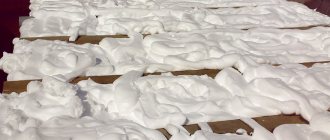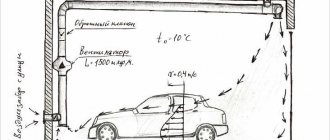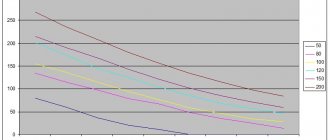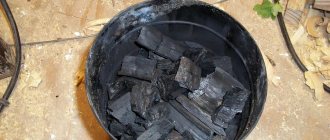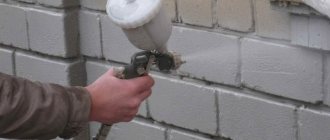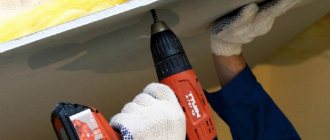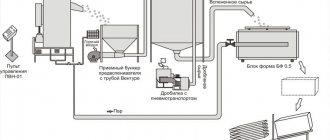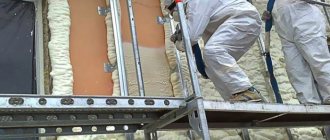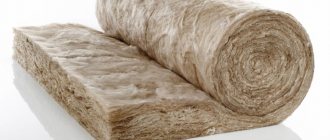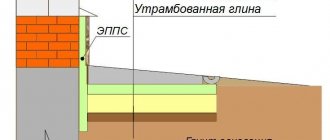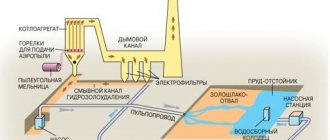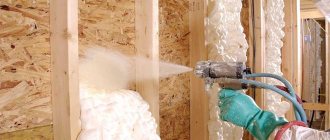| Name | Key Features |
| Liquid | The most common. It is used for thermal insulation of various structures, for repairs. Fills cracks and gaps. Can be cooked on site. |
| Granular (thermovata) | It is made by crushing the polymer into fractions of 10-15 mm. Economical during installation. Penoizol in granules in volume is 2 times higher than the amount of sheet polymer obtained during production. They fill the cavities between the walls when laying the floor. |
| Sheet | Insulation is poured into a special form, cut when ready, dried and further processed. It is mounted on the outside of the walls of houses, fastened with dowels. It can also be laid on the floor (between the joists). |
Indicators and advantages of penoizol
The popularity of urea foam is due to its low price and characteristics:
- Low thermal conductivity (0.041 W / m2 * K). To ensure good thermal insulation, a narrow layer of foam insulation is sufficient (at least 10 cm).
- High noise absorption, up to 65%. Even a narrow layer of building material solves the issue of sound insulation.
- Good fire resistance. The insulation belongs to the G-1 flammability group with the B-2 flammability category. The polymer does not melt, but evaporates without releasing harmful toxins. Smokes weak.
- Hygroscopicity. Air can pass through the foam, the vapor permeability property allows the walls to "breathe".
- Chemical neutrality to various components, including organic solvents.
- Biostability. Fungus and mold do not grow on penoizol, mice / rats do not gnaw it.
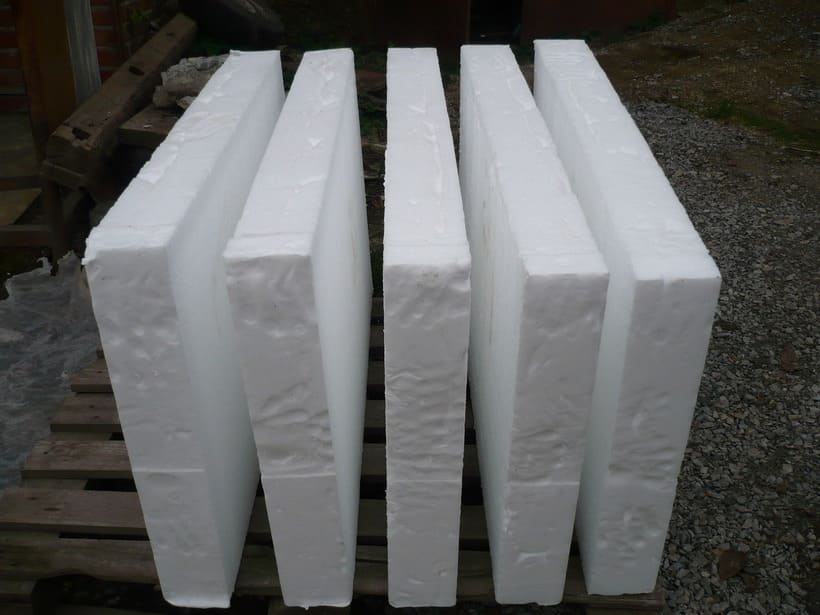
Penoizol characteristic


Finished boards from penoizol
Penoizol insulation has excellent characteristics. Among its advantages:
- the ability to keep warm;
- combustion resistance;
- resistance to agents of biological and chemical nature;
- the ability to retain moisture;
- the ability to pass air;
- strength and durability when used.
To assess the quality of the new generation material, consider its characteristics in more detail.
The ability to retain heat and fire resistance
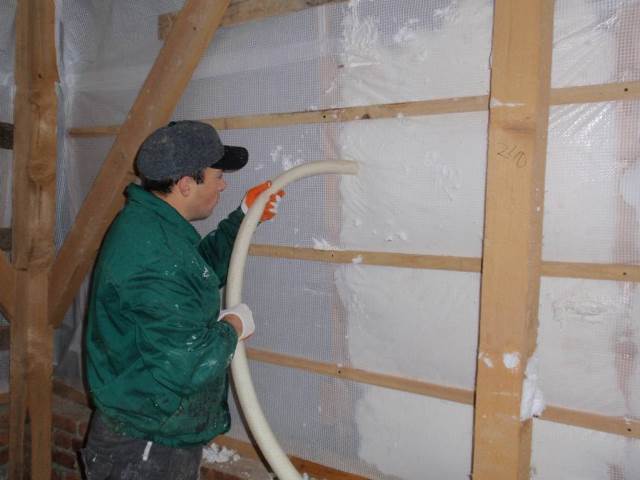

Do-it-yourself home insulation
Penoizol has a low thermal conductivity, which is the most important advantage of the material. Even walls with a 10 cm layer make the house warm, while the cost of insulation is noticeably reduced. The layer of modified foam can be from 5 cm to a meter at the request of the owner. The thermal conductivity coefficient is in the range of 0.031-0.041 watts per meter per Kelvin.
The polymer is resistant to fire: it does not burn or melt. The range of temperature limits is amazing, penoizol can withstand from -60C to + 80C, which expands the limits of its use in different climatic zones. When a strong fire occurs, the smoke from the new material is insignificant: it is 10 times less than from the foam. It belongs to the toxicity group - T-1, and the degree of smoke is D-1.
Important! Under conditions when the metal melts, penoizol slowly dissolves, disappearing without a trace. It does not leave behind smoke or harmful emissions.
Chemical and biological resistance
One of the characteristics of the penoizol heat insulator is the ability to withstand biological objects and chemical reagents. Mold will not take root on new material. Mice and rats avoid plastic and do not form passages or burrows in it. Organic solvents and chemical environment with aggressive components do not corrode liquid foam.
Some consumers who use this substance complain of a pungent, unpleasant odor while handling it.It is felt during installation and drying. This is possible: if a heat insulator costs a penny, then it is of low quality. It contains urea resin with a number of harmful impurities.
Moisture resistance and breathability
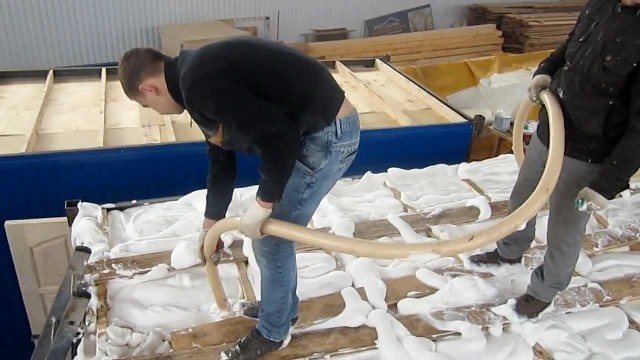

Change house insulation technology
The polymer perfectly absorbs and quickly gives off moisture, without losing its basic qualities. When dry, it continues to perform its function - heat retention. It is able to absorb 10-20% moisture per day, gradually evaporating it.
Important! Despite such excellent performance, ventilation openings and clearances should be considered, since the material's capabilities are not unlimited.
Due to the porous structure, the polymer "breathes", providing a comfortable existence for people in the room. This quality is also useful for walls, the destruction of which is slower.
Strength and durability
When using penoizol, its service life is taken into account. It is soft and easily adheres to any surface, adapting to their shape. But it does not differ in high strength: it can break at a break.
Experimental data indicate the service life of the new generation material: 30-50 years when distributed on vertical structures. These figures are proven by the practice of using other polymers.
disadvantages
Penoizol has the following disadvantages.
First, it absorbs moisture and does not give it away. Penoizol is quite resistant to moisture, but this feature does not allow the use of insulation when screed the foundation.
Secondly, the material gives a sediment in the range of 0.1-5%.
Thirdly, penoizol tears easily - it has low tensile strength.
Fourthly, it is possible to put insulation only at a positive temperature (at least + 5 ° C). Only in this case will you get high-quality foam for filling cavities.
If sheet and granular penoizol does not emit hazardous substances, then in liquid form it can evaporate harmful toxins. Workers are better off having protective equipment.
Penoizol manufacturing technology
- In a separate container, 3 ingredients are mixed: water, a foaming agent and a reaction catalyst. Urea-formaldehyde resin is poured into the second container. Subsequently, it enters the mixture under the influence of compressed air.
- The components are thoroughly mixed until a mixture is formed, similar in consistency to a soufflé. The resulting material is called liquid penoizol, that is, it is already suitable for use on construction sites.
- The liquid mass is poured into molds of various sizes. Curing takes place at room temperature, lasts up to 3 hours (depending on the shape, size and specific recipe), on average - 30-40 minutes.
- The resulting sheets of insulation are cut into separate slabs in accordance with the required dimensions.
- Urea foam is coated with a protective compound that increases strength and fire resistance.
- The finished product is packed and stored.
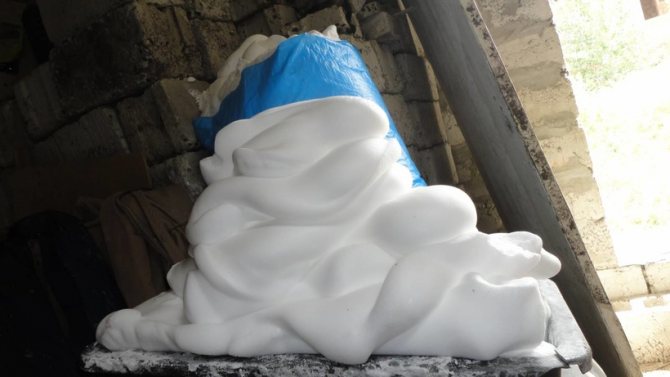

Penoizol types
Penoizol is a heat-insulating material that belongs to the group of foamed plastics, but has better characteristics, including higher fire resistance, non-toxicity, ease of installation, and resistance to bacteria and microorganisms than foam plastic.
There are 3 main types of penoizol:
- The most common is liquid insulation. Its convenience is due to the possibility of production directly on construction sites. With its help, thermal insulation of various kinds of structures is performed, and it is also used in repair work. An enclosed space is filled with foam, thus forming additional sound insulation in frame structures. In the process of repair, cracks and gaps are filled with liquid foam.
- The second most common is granular penoizol, otherwise called penoizol crumb or thermovat. The material is in the form of elastic granules.During the production process, the insulation is divided into particles no larger than 15 mm. The volume of crushed penoizol is 2 times higher than the initial one. Thanks to the use of thermal wool, you can save money in the construction of buildings and structures, filling them in the voids between the walls, insulating the floors.
- Penoizol sheet is made by pouring liquid raw materials into a special form. The solidified material is cut on machines into sheets of the required thickness. The sheets are then dried and mechanically processed. Buildings under construction are insulated with this type of penoizol, fixing it on the walls from the outside, and then covering it with panels or siding. The same sheets are used for floor insulation.
What you need to get started
A penoizol business can be started without serious investment. The equipment is inexpensive, and the main expenses every month will go to the purchase of raw materials and remuneration of personnel.
Table 1. Initial Costs for the Penoizol Business.
| Consumable item | price, rub. |
| check in | 20 thous. |
| Premises for rent, 90 sq. m | 25 thous. |
| Equipment | 200 thous. |
| Raw materials (for a month at full load) | 230 thous. |
| Salary, 6 people | 190 thous. |
| Additional expenses | 100 thous. |
| Total | 765 thous. |
Calculations are relevant for a city with a population of up to 1-1.5 million people. Additional costs include utility bills, advertising promotion, preparation of premises, etc. The amount of tax deductions is not taken into account in the calculation.
Selection criteria and equipment purchase
To organize the production of insulation, it is necessary to purchase special equipment. The standard production line consists of:
- compressor;
- gas-liquid installation;
- collapsible forms;
- containers for ingredients;
- packing table.
There is no need to purchase a drying chamber, as the liquid material solidifies at room temperature.
The production of insulation directly at the construction site will require a similar set of equipment, except for collapsible forms and a table for packaging.
To organize the production of penoizol, a mobile gas-liquid installation and compact containers in which the components will be mixed are sufficient.
When choosing equipment for the manufacture of insulation, it is necessary to proceed from financial capabilities, the planned volume of production, work in a stationary workshop or on construction sites, etc.
The equipment is affordable: equipping the workshop will cost about 100 thousand rubles, the purchase of powerful installations will require no more than 300 thousand rubles, and for organizing field production - about 70 thousand rubles.
Documentation
First you need to register a form of activity. You can work in the form of an individual (individual entrepreneur) or a legal entity (LLC). It all depends on the plans of the entrepreneur, the scale of production. Each form has its own capabilities and limitations, however, work in the form of an LLC will allow you to cooperate even with large construction companies and wholesale and retail chains.
When registering, OKVED-2 codes are indicated.
23.99.6 "Production of mineral heat and sound insulating materials and products".
22.23 "Manufacture of plastic products used in construction".
22.29 "Manufacture of other plastic products".
32.9 "Manufacture of products not included in other categories".
Certification is not required to launch a business project. The polymer is produced in accordance with TU 2254-001-33000727-99 “Heat-insulating foam insulation. Technical conditions ".
Where is penoizol used
Modified foam is used when pouring:
- spaces between OSB sheets and concrete floor;
- air gap between two load-bearing walls;
- inside the wall and outer upholstery made of lining, siding or profiled sheet;
- between the rafter system and the roof covering;
- in a frame assembled from false walls or partitions.
The composition and properties in demand in construction make it possible to widely use a new generation of polymer. The total qualities of liquid foam help in the construction of a wide variety of structures.
Equipment for penoizol
For the industrial production of insulation, you need to buy the following equipment:
- compressor and power supply;
- a gas-liquid plant for liquefied gas, including a pumping system for supplying foam and solution;
- collapsible forms for pouring;
- containers for making a mixture;
- large table for packing material.
In this configuration, it is possible to produce sheet and liquid penoizol.
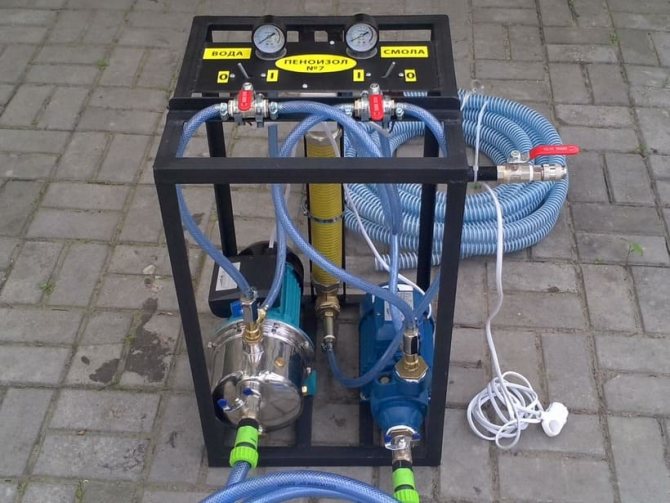

On sale there are equipment of Russian, Ukrainian and foreign production. The models differ from each other in price, technical characteristics - including the degree of process automation. There are mobile and stationary installations.
Equipment and components for the production of penoizol., UPG units, VPS-G resin, ABSK foaming agent, orthophosphoric acid.
Negotiated price Buy
The equipment can be made by yourself - the necessary drawings and diagrams are on sale.
When choosing a technique, it is better to look for a seller who trains the customer's personnel on the installation. The equipment must be guaranteed.
For the production of penoizol, urea-formaldehyde resin, a foaming agent (ABS) and a curing catalyst - orthophosphoric acid, are used. Below is a list of just some of the suppliers of raw materials for the production of penoizol. It is not possible to check information on all suppliers, therefore inaccuracies are possible.
List of suppliers of raw materials for the production of penoizol:
RESIN
| Lytkarino, Moscow region Buyers of our units get a 5% discount on resin from this supplier! | 8 (977) 950-70-91 |
| Borisov, Belarus JSC "Borisovdrev" | (01777) 3-14-54; 6-62-92 |
| Veliky Novgorod Akron | (8162) 99-69-59; 99-67-92 |
| Volgograd PO "Khimprom" | (8442) 45-87-89 |
| Gubakha, Perm region JSC "Metafrax" | (34248) 9-20-19 |
| Irkutsk LLC "Utes" | (3952) 34-03-68; 34-20-32 |
| Kadui village, Vologda region OJSC "Severtara" | (81742) 2-16-61; 2-14-75 |
| Kazan CJSC "Tatkhim-Invest" | (8432) 16-82-62, 16-82-63 |
| Kostroma JSC "Fanplit" | (4942) 31-21-45; 31-44-91 |
| Krasnoyarsk | (3912) 64-89-07 |
| Moscow LLC "Sofieks" | (495) 232-11-01 |
| Moscow | (495)171-07-47; 171-69-66 |
| Moscow LLC "MDKOM" | (495) 487-3146, 487-3147 |
| Murom, Vladimir region CJSC "Murom" | (49234) 3-57-22; 3-29-17 |
| Nizhny Tagil "Uralchimplast" | (3435) 27-27-48 |
| Novosibirsk | (3832) 34-11-00, 34-11-00 |
| Orekhovo-Zuevo (Moscow region) JSC "Karbolit" | (4964) 12-21-54, 12-22-27 |
| Safonovo, Smolensk region Avangard software | (48142) 3-25-67 |
| Tambov Pigment OJSC | (4752) 71-03-41, 79-50-26 |
| Tver JSC "Tverkhimvolokno" | (4822) 33-97-83; 33-84-79 |
| Tomsk "Tomsk Petrochemical Plant" | (3822) 73-01-25, 73-10-28 |
| Tomsk "Vesna-Techno" | (3822) 24-38-91, 24-40-17 |
| Tyumen "Tyumensky Khimsintez" | (84639) 2-26-71; 2-48-97 |
| Yaroslavl JSC "Lakokraska" | (4852) 25-26-55; 27-06-12 |
| Donetsk (Ukraine) SGPP "Azot Association | (06452) 9-21-41 |
| Ivano-Frankivsk (Ukraine) MChP "ASK" | (03472) 2-30-57, 6-01-08 |
ORTHOPHOSPHORIC ACID
| Volgograd JSC "Khimprom" | (8442) 45-85-20, 45-87-32 |
| Voskresensk Moscow region | (49644) 2-15-54; 2-78-68 |
| Irkutsk LLC "Utes" | (3952) 34-03-68; 34-20-32 |
| Kemerovo JSC "Khimprom" | (38422) 22-65-95, 22-19-52 |
| Moscow HTK "Himass" | (495) 973-05-70 |
| Moscow LLC "Framenia" | (495) 158-49-55 |
| Moscow "Sintez" | (495) 465-20-35; 465-61-21 |
| Moscow "Alizarin" | (495) 797-80-42; 965-08-91 |
| Moscow "Himtorg" | (495) 409-56-66 |
| Moscow "Alizarin" | (495) 797-80-42, 965-08-91 |
| Nizhny Novgorod "Khimproduktsiya" | (8312) 56-74-29; 56-73-37 |
| Novosibirsk LLC "Ives" | (3832) 76-33-81; 76-08-43 |
| Tomsk "Vesna-Techno" | (3822) 24-38-91, 24-40-17 |
| Khabarovsk "Dalkhimsteklo" | (4212) 34-17-17; 34-74-27 |
FOAM DEVELOPER
| RusChemTrade | 89101243819, fax |
| Moscow LLC "Penta-91" | (495) 730-05-30; 730-05-10 |
| Dzerzhinsk Finist & Co LLC | (8313) 21-81-26; 21-43-21 |
| Yekaterinburg "Cascade" | (3432) 36-66-96, 37-15-59 |
| Irkutsk LLC "Utes" | (3952) 34-03-68; 34-20-32 |
| Nizhny Novgorod "Khimproduktsiya" | (8312) 56-74-29; 56-73-37 |
| Moscow "Sintez" | (495) 465-20-35; 465-61-21 |
| Omsk | (3812) 64-60-70, 64-97-25 |
| St. Petersburg | (812) 462-40-65 |
| Tomsk "Vesna-Techno" | (3822) 24-38-91, 24-40-17 |
| Dzerzhinsk FEM LLC | (8313) 29-73-57; 22-76-61 |
Raw materials
The product is produced by foaming a polymer resin according to a developed recipe. Depending on the formula, additives may be added to the composition, but the main components are the same.
- Synthetic urea-formaldehyde resin.
- Foaming agent. Required for stable foam formation.
- Catalyst (hardener). Accelerates the hardening process.
- Water with a temperature not lower than + 20 ° С.
Finding and buying the necessary raw materials will not be a problem.
There are generally accepted standards regarding the recipe, but a businessman may well create his own insulation formula. It is better to contact a construction expert, although you can find information yourself - there are enough online resources, forums on this topic on the Runet.
Penoizol production workshop
To organize a business, you will need a room with an area of 70-90 sq.m, divided into a production workshop, a warehouse, a staff room, an administrative office and a bathroom. It should be located away from residential areas. Communications need to be carried out on the territory of the mini-plant.
The workshop is equipped with a 220V current supply and a good ventilation system. The latter is necessary, because when drying sheets of insulation, substances harmful to health are released (phenol-formaldehyde is present in the composition of the synthetic resin).
The warehouse will store raw materials and finished goods. It is worth placing metal racks in the room.
The premises should be equipped with a car entrance for unloading and loading operations.
Staff
To service the production, you need to hire 3 people, one of whom will be the senior in the shop. The latter is responsible for coordinating the rest of the workers, monitoring their activity and training. It is the senior worker who needs to be sent on an internship to the equipment seller.
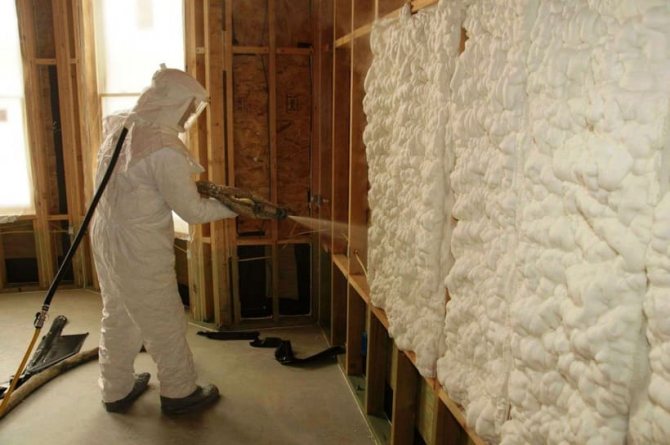

A sales manager is required to organize sales. He will meet and negotiate supplies with representatives of construction and wholesale and retail companies.
A driver is needed to deliver raw materials to the plant and finished goods to customers.
The accountant will deal with paperwork and preparation of papers for tax authorities. It is better to hire him for outsourcing (contacting an accounting firm).
Penoizol insulation of structures
When the spray device is ready and the solution is mixed, you can start working.
- As already mentioned, the first step is to assemble the installation according to the instructions or sequentially for a homemade device.
- A solution of liquid penoisol raw materials is poured into the container of the device.
- A crate is installed on the prepared surface (if thick layers of insulation are needed).
- Insulation is applied to the work surface. Movements should be accurate, average speed. Do not smear the solution or apply very thick caps.
- When the layer is laid out, it is left for 2-3 days until it hardens completely, after which the excess is cut off with a knife.
Who should we sell the finished product to?
3 main groups of urea foam consumers:
- construction companies, repair and construction companies;
- retail stores and wholesale and retail chains selling construction products, construction markets;
- private persons.
At the initial stage, it is important to use all possible distribution channels - it is necessary to attract the attention of potential buyers to the new product. However, the most convenient option is to get a contract for large supplies of insulation. Therefore, great attention should be paid to negotiations with construction companies.
Penoizol business is seasonal. Construction is actively carried out in the warm season. Of course, large construction projects are carried out in winter, but in general, the volume of construction work in the cold drops noticeably.

